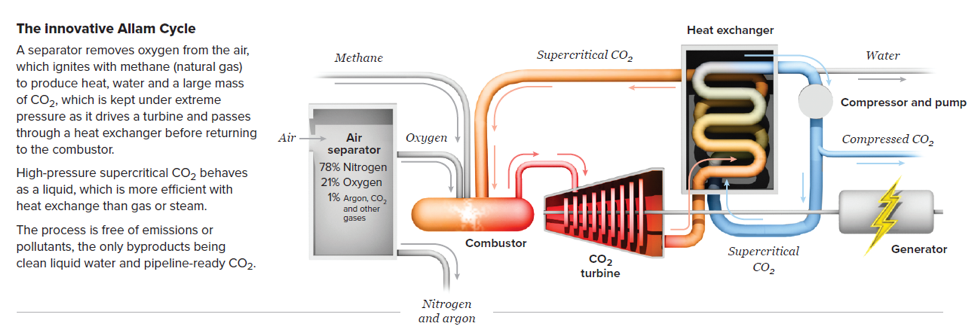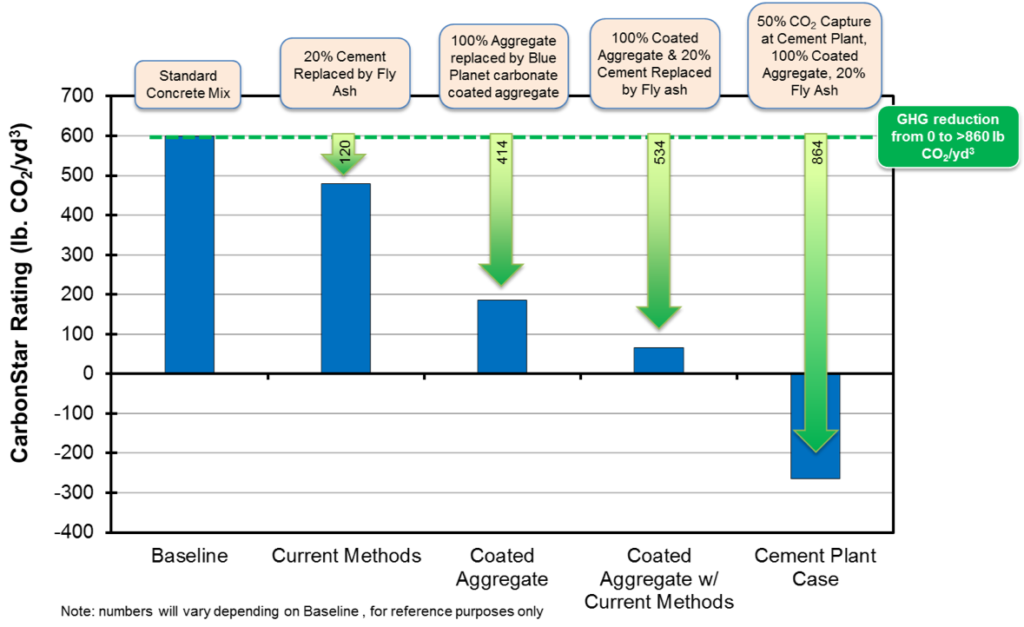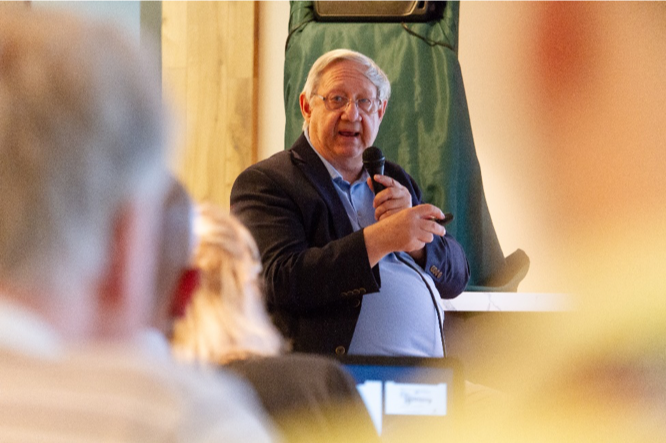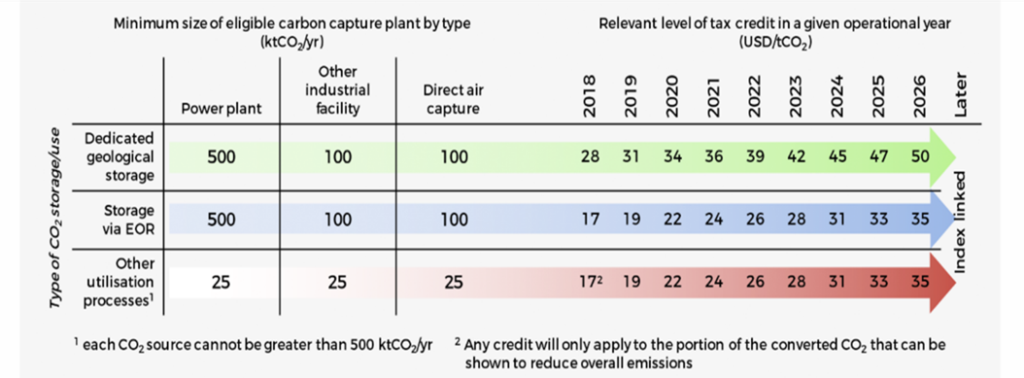
By Kyle Saukas
While some advocates are calling for the removal of fossil fuel powered generation, the global energy system is stubbornly rigid. With the clock ticking to reduce emissions as soon as possible, the focus must move to abating emissions on the road to net-zero emissions by mid-century.
On May 29th, Leaders in Energy (LE) members met to discuss how to better utilize the abundant fossil fuel resources we already have in order to move towards a cleaner future at the Reducing the Carbon Footprint of Fossil Energy: Searching for the Next Better Event.
The event consisted of a panel and Q&A discussion focused mainly on carbon capture utilization and sequestration (CCUS) technologies that could be leveraged to meet sustainability goals to mitigate climate change.
Speakers included:
- Moderator: Bill Brandon, President, and CTO Industrial Ecosystem Partners and Leaders in Energy Vice President of Research
- Panelist: Lee Beck, Senior Advocacy and Communications Advisor, Global Carbon Capture and Sequestration (CCS) Institute
- Panelist: Greg Kats, Board Member of Blue Planet, President of Capital E, and CEO of Smart Surfaces Initiative
- Panelist: Miriam Aczel, Co-Director Amir D. Aczel Foundation (event co-sponsor) and Ph.D. Researcher at Imperial College London’s Centre for Environmental Policy, Communications Director for Leaders in Energy

Left to Right: Miriam Aczel – Aczel Foundation (Event Sponsor), Emma Haberman – Industrious Ballston (Event Host), Bill Brandon, Lee Beck, Grag Kats, Janine Finnell
Why improve fossil fuels?
Despite the tremendous growth of renewable energy technologies over the past decade, we haven’t yet turned the tide on greenhouse gas emissions in the power, industrial, and transportation sectors, according to Lee Beck of the Global CCS Institute, “In 2018, according to the International Energy Agency, global CO2 emissions grew by 1.7%, in the U.S. by 3.1%. Primary energy demand grew by 2.3 %, almost 70% of which was met by fossil fuels with renewables unfortunately unable to keep up.”
Miriam Aczel of Leaders in Energy echoed Lee’s message that Carbon Capture and Storage (CCS), a suite of climate change technologies, is a key option. In discussing her research on fracking and the natural gas industry, she conveyed that natural gas is the dominant source for meeting new energy demand in the world right now.
Our remaining budget for greenhouse gas emissions is running out in the race against 1.5 degrees Celsius global warming targets. With the pressing need to decarbonize it may be time to focus on removing what is harmful about fossil fuels processes as soon as possible while also transforming our energy system to run entirely on clean energy sources.
Carbon capture, utilization, and storage is a broad term for a suite of technologies that prevent CO2 which is contributing to global warming from entering the atmosphere. New technologies make storing those emissions into useful products, the ground, and elsewhere possible. The field has been around since the 1970’s, but there are many recent advancements garnering new interest, which were showcased during the event.

What does CCUS look like?
The Allam Cycle, for example, is a new electricity generation technology which produces no emissions. But there are also other technologies such as direct air capture (DAC) which sucks CO2 out of the air. Lee Beck shared with attendees a range of other technologies that are currently being developed and deployed across the globe and what the barriers are to their deployment.

Yet, there are others who see new opportunities for innovation with CO2 as a recycled resource.
How can CO2 be Recycled as a Resource?
Greg Kats sits on the board of Blue Planet and shared the company’s vision to turn carbon dioxide emissions from industrial practices and energy production into long-lasting, sustainable concrete and cement. These essential building materials of our modern society may be the perfect opportunity for carbon capture. According to Greg the amount of cement and concrete needed for construction each year globally roughly equals current annual carbon emissions. The process they utilize could potentially create net negative emissions reductions for construction projects. Their mission is playing out already in several projects, including the development of a new terminal at San Francisco International Airport.

Source: Greg Kats, Blue Planet
Blue Planet’s approach for cement and concrete production would mean less mining, solving the carbon dioxide emissions problem, and meeting the demands of future development worldwide more sustainably. There might be many more opportunities to arise out of CO2 emissions but the main hurdle now is the lack of research funding for advancing this sector according to Kats.

Source: San Francisco Bay Aggregates, LLC, A Blue Planet Company
Can Fuels be Made from Recycled CO2?
After discussing “The Global Carbon Index” and how different fields have hugely different GHG emissions, Bill Brandon focused on the use of renewable hydrogen in the refining process. This can have a very moderate impact on petroleum’s carbon footprint, but more importantly, he stated, “It is developing the technology for electrolysis of water into green hydrogen.” He pointed out that three new such projects have been announced in the last 7 months.

While there is a move to produce ‘blue hydrogen’ (hydrogen made from reforming natural gas and sequestrating resulting CO2) to supply transportation needs, there is also another possibility of supplying synthetic fuels made from recycled carbon (CO & CO2). One company, LanzaTech, has two commercial facilities in operation making ethanol from waste industrial gasses from steel mills. They have four more facilities under construction or development.
Bill Brandon pointed out that hydrogen atoms naturally want to be attached to other atoms and that the infrastructure for using hydrogen in the transportation sector is a huge challenge. By making synthetic fuels from captured carbon and green hydrogen (hydrogen made by electrolysis from curtailed renewable power), liquid fuels can be introduced into our existing distribution system. This is already being done in the airline industry where LanzaTech, SkyNRG,BPand others are making renewable and synthetic jet fuels for use in commercial flights. He pointed out that replacing fossil fuels with synthetic fuels made with recycled CO2 is the same as sequestrating CO2 from fossil sources.
How can CCUS be encouraged?
Along with additional research for new technologies in this space, there was discussion around how current and new technologies could be developed and deployed faster. Lee Beck discussed the current United States tax credit also known as 45Q– the relevant section of the US tax code – that provides a production tax credit that rewards owners of capture equipment based on the tonnes of carbon dioxide they prevent from entering or remove from the atmosphere. She also described how California’s Low-Carbon Fuel Standardis providing rewards to direct air capture projects globally and carbon capture projects which lower the Carbon Intensity of California’s transportation fuels.

Source: International Energy Agency
Greg Kats discussed the development of a CarbonStar program would set a single standard for disclosing carbon content within cement or concrete. Having this standard, similar to the highly successful EnergyStarprogram, would allow companies and governments the ability to choose to, and set goals for, purchasing more sustainable cement and concrete products.
Near the end of the evening, the discussion turned to deploying hydrogen produced from natural gas with carbon capture that would power harder to reach sectors of the energy sector. While most of the discussion of the night focused on electricity production from fossil fuels, Bill Brandon and others discussed how taking captured carbon dioxide and mixing it with hydrogen generated from increasingly available excess renewable energy generation, could develop “recycled” fuels that would heat homes and power currently cars on the road to begin reducing the footprint of those sectors.
Bill Brandon added to this discussion by stating that synthetic fuels need to get the same treatment as geological sequestration since they have the same carbon reduction effect. Lee Beck noted that carbon monoxide was recently included through the reform of the 45Q tax credit in 2018.
Looking forward to reducing the negative impact of fossil fuels
Much of the sustainability movement of today is focused on replacing fossil fuel production from our society. While all panelists agreed that was still important, they shared the idea that the solutions we may need to solve our climate change problem may require utilizing fossil fuels in a smarter way in the meantime to meet our rapidly approaching goals.
Kyle Saukas works for ICF’s Energy Advisory Services team as the marketing and communications lead. He’s a passionate advocate for sustainability and a transition to clean energy. Kyle coordinates and develops the email newsletter for Leaders in Energy.



Leave a Reply